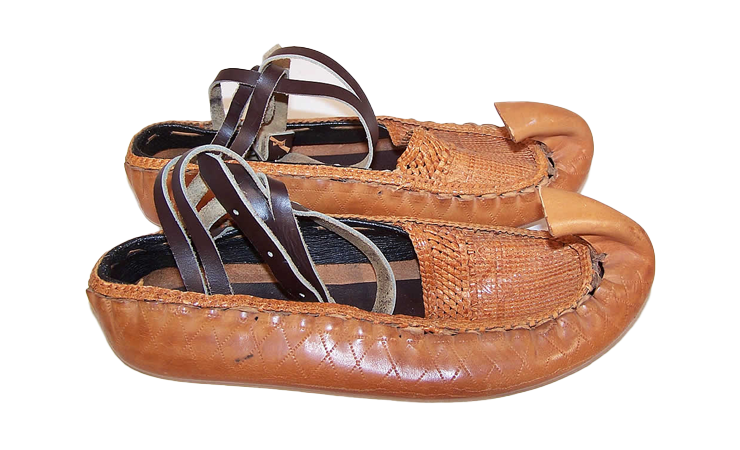
Serbia’s traditional clothing embodies the nation’s rich cultural heritage and regional diversity. Rooted in centuries-old customs, these garments reflect the interplay of Balkan, Ottoman, and European influences. From intricate embroidery to layered designs, Serbian attire tells a story of identity, celebration, and practicality.
Traditional Serbian Women’s Clothing
Opanci
Traditional leather shoes, known as opanci, are a staple of Serbian attire for women. These handmade shoes, often adorned with patterns, are uniquely crafted to represent various regions of Serbia. Their durability and flexibility made them ideal for rural life and are worn during traditional dances and celebrations.
Anterija
The anterija is a long-sleeved, fitted dress worn as a base layer. Made of light cotton or linen, it is often embroidered at the cuffs and neckline. This versatile garment forms the foundation of a traditional woman’s outfit.
Jelek
The jelek is a sleeveless embroidered vest worn over the base layer. Typically made of wool or velvet, it is richly adorned with gold or silver thread, highlighting its role as a decorative yet functional piece in traditional dress.
Zubun
A long outer garment, the zubun is made of wool and is worn over the jelek. It adds warmth and sophistication, especially during colder months. The zubun is usually decorated with intricate patterns unique to each region.
Marama
A headscarf, or marama, completes the ensemble for women. These scarves, available in vibrant colors and patterns, symbolize modesty and tradition. They are tied in various styles depending on the occasion and regional customs.
Traditional Serbian Men’s Clothing
Pantalone
Men’s trousers, or pantalone, are typically made of wool or heavy cotton. These pants are practical and durable, designed for agricultural work while maintaining a refined appearance during formal occasions.
Košulja
The white shirt (košulja) for men resembles the women’s version but is tailored more simply. It serves as a versatile base layer for various outfits, often embellished with subtle embroidery.
Prsluk
The prsluk is a vest similar to the jelek but tailored for men. Made from heavy fabrics like wool, it often features decorative elements such as braiding or buttons, adding a touch of elegance to everyday wear.
Šubara
A fur hat, known as šubara, is an iconic accessory for Serbian men, especially in colder regions. Traditionally made from lamb’s wool, the šubara symbolizes resilience and is often associated with rural life.
Pojasevi
The pojas (belt) is an essential accessory in traditional Serbian men’s clothing, often made from leather and decorated with metalwork. The pojas serves both as a functional and decorative piece, often worn with trousers or over a prsluk.
Modern Serbian Clothing
Today, traditional Serbian clothing is mostly reserved for cultural events, folklore performances, and weddings. Modern Serbians typically wear contemporary Western-style clothing, favoring jeans, blouses, dresses, and business suits. However, the legacy of traditional attire lives on through vibrant textiles, embroidery, and accessories, which continue to inspire contemporary Serbian fashion designers.
The post Complete Guide to Serbian Clothing appeared first on The Fashiongton Post.
